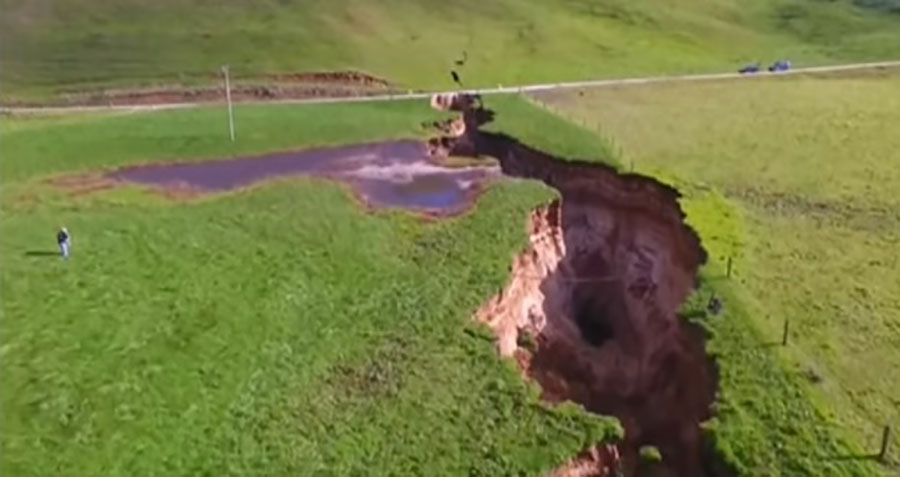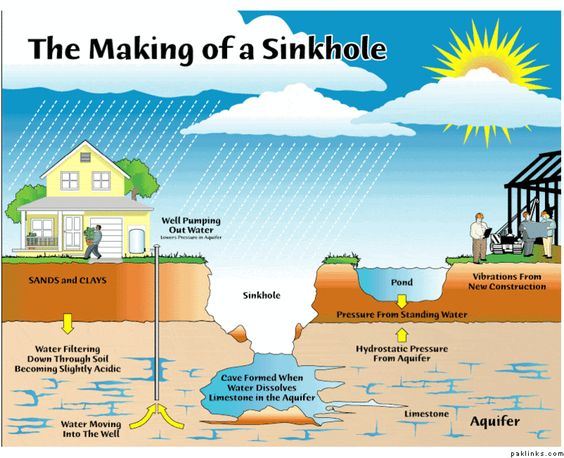 In early May, a farm helper at a dairy farm in New Zealand narrowly missed driving into a gaping hole while on his motorcycle. After alerting his manager, they fenced off the hole so that livestock wouldn't wander nearby.
In early May, a farm helper at a dairy farm in New Zealand narrowly missed driving into a gaping hole while on his motorcycle. After alerting his manager, they fenced off the hole so that livestock wouldn't wander nearby.
Meanwhile, a much smaller sinkhole opened up on the lawns of the White House in Washington DC recently and has been fixed.
A sinkhole is a depression in the ground that is caused by the collapse of the soil above it. But why does the Earth open up suddenly to form sinkholes?
Why Do Sinkholes Form?
 Sinkholes form when the ground underneath the surface gives way. This could happen for several reasons: when the soil gets saturated with water and becomes too heavy, it collapses crushing the spaces in between. This can lead to the creation of pond-like areas or wetlands.
Sinkholes form when the ground underneath the surface gives way. This could happen for several reasons: when the soil gets saturated with water and becomes too heavy, it collapses crushing the spaces in between. This can lead to the creation of pond-like areas or wetlands.
Another type of sinkhole forms when surface water seeps in and slowly dissolves underground rock over time. These rocks are made of limestone, calcium carbonate, salt beds, or other water-soluble minerals.
These underground cavities or spaces grow over time until it becomes too much for the surface soil to bear and it caves in. The New Zealand sinkhole falls into this category of natural sinkholes.
Sinkholes also form due to man-made activity such as excessive pumping of groundwater or the creation of storage ponds for runoff or industrial waste which add more weight to the soil. In the case of the White House lawn, it appears to have been the result of previous construction and landscaping activities.
How Big Can They Get?
Some sinkholes can be very large such as the 800-foot-wide one in Guatemala that suddenly opened up in 2007, swallowed a few homes, and killed three people, or the 30-foot one in Florida that swallowed a house and a man in 2013.
As you can expect, sinkholes are most likely to form in regions with very heavy rainfall. And that is exactly what happened in New Zealand where heavy rains caused water to seep underground and erode the limestone rock.
Besides being a record-breaker, the new 66-foot hole in New Zealand is over 60,000 years old. What is even more exciting is that the rock and ash near the bottom are volcanic in nature. Researchers believe this must have been the crater of an ancient volcano and hope to study the soil layers and preserved minerals.
Courtesy Forbes, USGS







